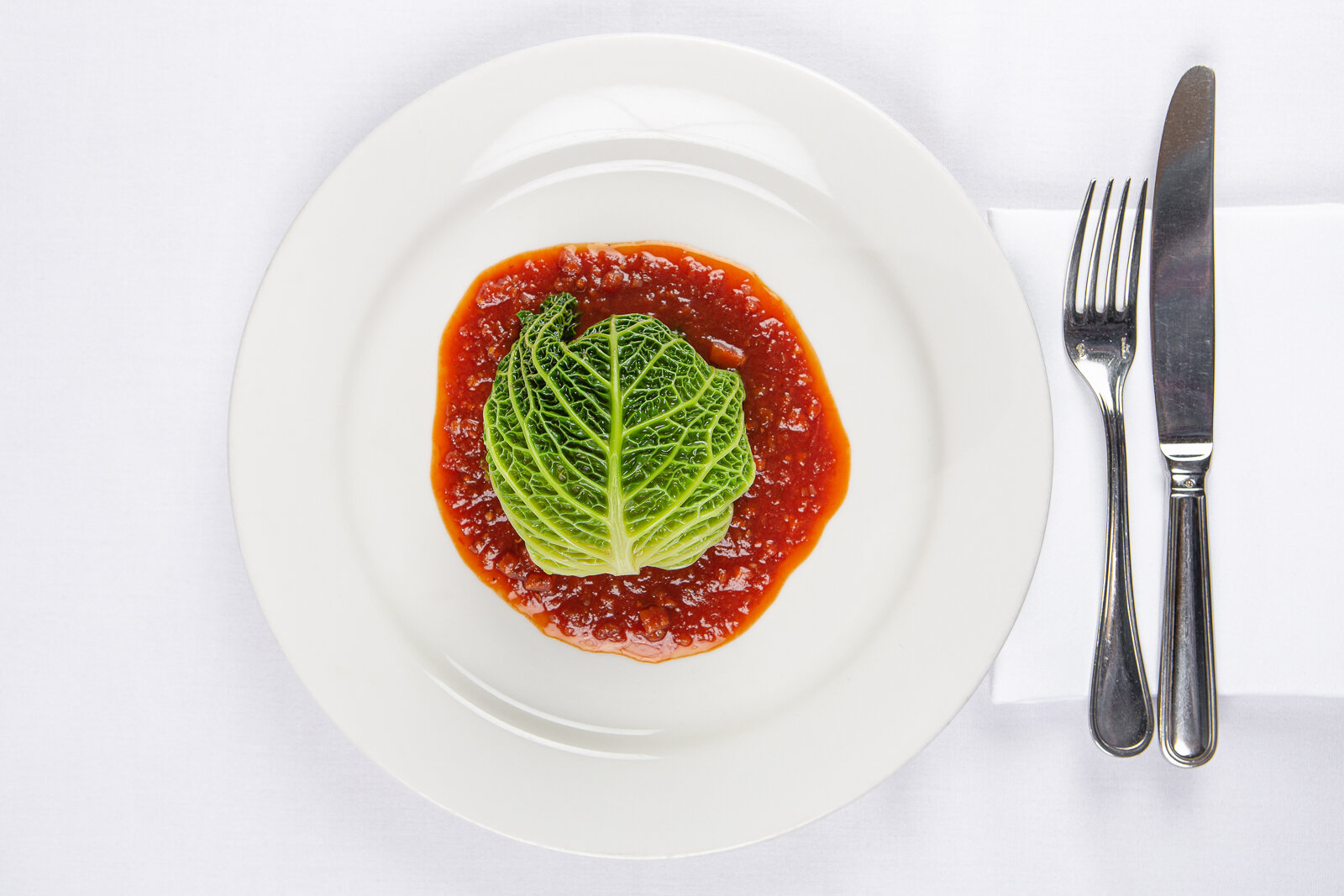“Tongue and cheek are wonderful together. The almost mousse like texture of the beef cheeks is absolutely delicious. It’s not an expensive cut either, although you’ll need to go to the butcher or market to get them. The just-fried dice of tongue is perfect with beef. Tongue was used a lot by some of the best chefs in the country until a few decades ago. It has a rich, meaty flavour and really complements the bacon and onions in the rich sauce. I'd serve with a very buttery mash.”
Serves 3 to 4
INGREDIENTS
1 large beef/ox cheek
200g piece ox tongue, brined then braised in beef stock, chilled and diced into 1cm cubes
1 carrot, peeled and thinly sliced
1/2 onion, peeled and thinly sliced
1 stick celery, thinly sliced
1 bay leaf
A few sprigs of thyme
1 large glass of good red wine
1 clove garlic
1 star anise
A handful cleaned chanterelles
100g small bacon lardons
750ml good beef stock
12 small button onions or small shallots, cooked in stock for 20 minutes
1 teaspoon roughly-chopped curly parsley
2 tablespoons cold-pressed rapeseed oil
A knob of butter
Good salt and pepper
Buttered greens
Mash to serve, optional
METHOD
Place the beef cheek in a plastic tub and add the wine, carrot, onion, celery, bay leaf, garlic, star anise and thyme. Give it a good mix, cover and marinade overnight in the fridge.
The next day, remove the cheek from the marinade and pat dry on kitchen paper. Reserve the wine and veg.
Pre-heat oven to 150°C.
Heat half the oil in a thick-bottomed pan. Season the beef with salt and pepper, then sear until well browned all over on a high heat for 5 to 6 minutes. Remove the beef from the pan and add the marinated veg to the pan to fry until golden brown - about another 5 minutes. A good golden colour is important here. Then add the wine and bring to the boil. Reduce for 5 minutes then add the beef stock and bring to the boil again. Simmer for 5 minutes before returning the beef cheek to the pan. Cover with a lid and braise in the oven for 3 to 4 hours.
When the beef is ready it will be quite fragile and soft so leave it in the pan out of the oven for an hour. Carefully remove the beef from the pan and roll it in cling film to keep it moist. Refrigerate for 3 to 4 hours.
Meanwhile, pass the stock through a fine sieve and discard the vegetables. Reduce for 5 to 10 minutes until it’s nice and sticky.
Remove the beef cheek from the cling film and cut into 3 or 4 pieces and place into the pan with the reduced stock and gently reheat. Leave it to warm up for 20 to 25 minutes, gently turning each piece now and again.
Next, heat the remaining oil frying pan on a high heat and add the bacon lardons and tongue. Fry for 3 to 5 minutes stirring and tossing as you go. Add some thyme and the onions and season. Then add the chanterelles and the parsley, followed by a knob of butter and toss again.
Whilst this is frying, prepare some buttered greens of your choice.
To serve, arrange the buttered greens in the centre of the plate and top with the beef cheek. Garnish with the mushrooms, bacon, tongue and onions. Serve with a big bowl of buttery mash.















